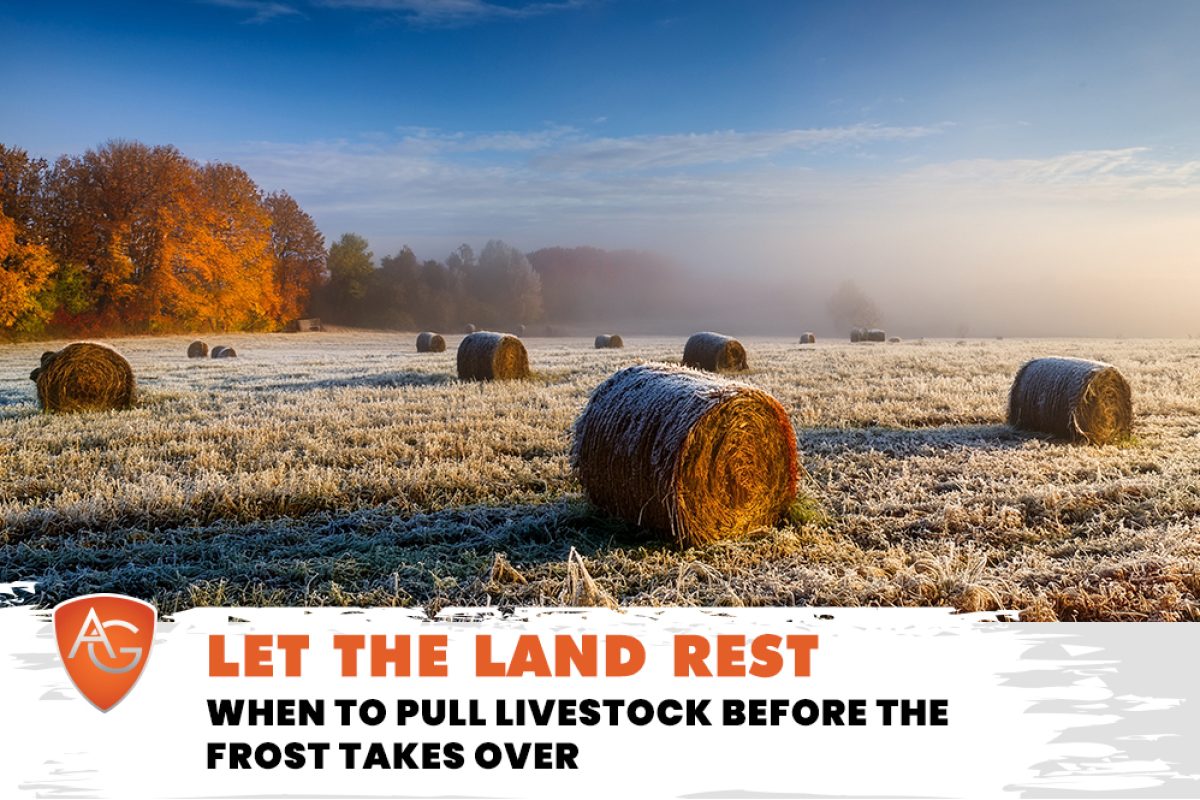Overview: Find out when to pull livestock before frost to protect your Wyoming pastures and cattle health. Learn signs to watch for, nutrition risks, and how All Around Ag provides quality hay for winter feeding.
As the cool nights of fall creep into Wyoming, ranchers know one truth well: frost is just around the corner. While the change in weather can be welcome after a long summer, it also signals a key decision that can shape the health of your herd and the strength of your pasture next spring — when to pull livestock before the frost takes over.
This decision isn’t just about reacting to the calendar. It’s about balancing animal nutrition with pasture recovery and ensuring that the hard work you’ve invested into your grazing land pays off long after the snow flies.
Why Timing Matters
When cattle stay on pasture after frost, the effects ripple into the following year. Frost-damaged plants lose their nutritional value almost overnight, forcing cattle to eat more volume but gain less energy.
Worse, if livestock graze too heavily on plants already weakened by cold, those stands may not bounce back in spring. That can mean thinner grass, more weeds, and higher hay bills later.
By pulling cattle before frost hits, you give perennial grass and legumes a chance to store the energy they need for winter survival. Think of it as putting fuel in the tank for next year’s grazing season. Stronger root systems today mean healthier, more productive pastures tomorrow.
Nutrition Shifts After Frost
The frost line isn’t just a weather marker — it’s a nutrition marker. Once frost hits, sugars within the plant change, and protein levels begin to decline. While the forage may look green, it can’t meet the same nutritional needs.
Certain forages also carry health risks after frost. Alfalfa can increase the chance of bloat, and sorghum-sudangrass may develop prussic acid, which is toxic to livestock. Without a plan, cattle could be left short on nutrition or exposed to dangers that compromise herd health.
That’s why stocking up on dependable hay ahead of time is critical. Premium options like North Park Timothy Grass, Orchard/Alfalfa mix, Straight Alfalfa, and Cow Alfalfa are proven feeds that keep cows in condition through winter when pasture isn’t an option.
Also Read >> The Impact of Seasonal Changes on Cattle Nutrition
How to Know It’s Time to Pull Cattle
Every ranch is unique, but some clear signs can help you make the call:
-
Consistent overnight lows near freezing – Once frost becomes predictable, pasture risks rise quickly.
-
Pasture isn’t rebounding – Plants that aren’t recovering between grazings signal it’s time to rest the land.
-
You see increased grazing pressure – When animals are working harder to find feed, quality is already slipping.
-
You’re planning next year’s grazing – Remember, the best pastures in May are the ones that got a rest in October.
Benefits Beyond the Herd
Pulling cattle before frost isn’t just about nutrition — it’s about stewardship. Pasture is the foundation of every ranch, and protecting it means protecting your livelihood. Healthy forage stands reduce weed pressure, improve soil stability, and provide a reliable base for future grazing seasons. It’s an investment in the land, your herd, and the generations of ranchers that follow.
Planning Ahead with Quality Hay
Transitioning livestock off pasture doesn’t have to create stress. At All Around Ag, we keep ranchers supplied with high-quality hay for winter feeding. From Wyoming Timothy/Garrison to cow hay and straw bales, we deliver the reliability your operation depends on.
Making the call to pull livestock before frost may feel like giving something up — but in reality, you’re giving back to your land. And when spring comes, that choice pays off in healthier pastures and stronger cattle.
